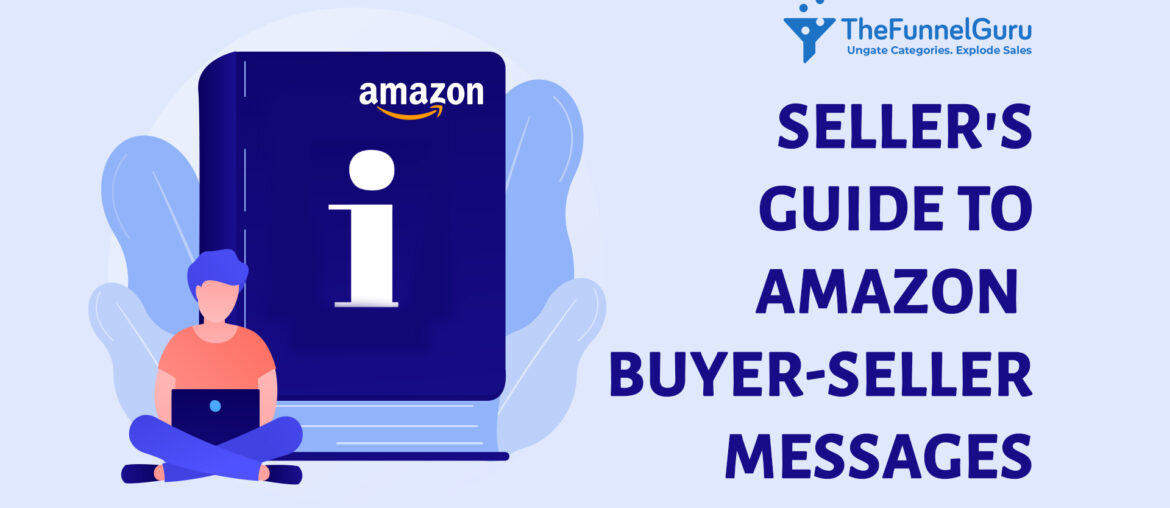Amazon must protect its buyers from fraud and abuse and its sellers from potentially unscrupulous actions from competitors! So, guidelines must be put in place.
Amazon developed a buyer-seller messaging platform, which is free for Amazon sellers to use and to facilitate conversation easily. This guide will help you to figure out what to and what not to do on Amazon buyer-selling messaging.
AMAZON BUYER-SELLER MESSAGES
Amazon’s Buyer-Seller messages act as a communication tool that makes sellers a way to interact with customer’s without sharing their personal information.
These messages are exchanged via Amazon Seller Central or via encrypted mail, where Amazon provides an email alias for the buyer.
This Amazon buyer-seller messaging service is a detailed record of your communication with customers that can help improve your customer service.
These Amazon Buyer-Seller messages are heavily regulated, everything must go through by Amazon.
It is a communication hub where you can see all your past and ongoing messages in one place, including those being routed through email.
CONTACTING BUYER
Contacting a buyer requires a few steps:
Navigate to the Orders tab and select Manage Orders.
Find the order that you want to reach out.
If the time has passed since the order was placed, the buyer’s name will be available under Order Details.
Select a “contact reason” on the next page within your seller platform.
Regardless of how you contact buyers, you won’t be able to see their real email addresses. Emails will still pass through Amazon’s messaging service and appear in buyers’ inboxes with your business name.
AVOID DOING THESE MISTAKES
Sellers must consider these steps and avoid doing this while making conversation with Amazon buyer-seller messaging:
1. OVER-MESSAGING
Over-messaging is a common error many sellers still make. Amazon emails buyers once when a purchase is made, once when the order ships and during or after delivery.
It’s against Amazon’s terms of service to send more than one message per order that repeats the information they’ve already provided.
2. NOT OPTIMIZING
Don’t make the mistake of sending the same message every time. Test your Buyer-Seller messages and determine what is most effective.
Start with A/B testing and send out two nearly identical messages with different elements. Then, track their open rates, click-through and conversions. Keep the best performing messages and test them with new elements.
3. CUSTOMER FOCUS
Remember, customers need to be a high priority. Sellers who focus on their own needs instead of the Buyer’s will not be effective.
To build a successful brand, you need to focus on customer needs. You need to use this Amazon buyer-seller messaging platform to serve customers not only to seek reviews.
4. SENDING INAPPROPRIATE MESSAGES
If the message indicates the review would be helpful for the Seller’s business, the Buyer will uninterested and likely will not leave a review.
If the message appeals to the Buyer’s willingness to help fellow shoppers, there is a better chance the Seller will earn a review.
CONCLUSION
As an Amazon seller, you are responsible for following the new Amazon Communications Policy guidelines. Ensure your Amazon messages stay compliant and don’t manipulate the messaging system.
Knowing the rules is vital, so make sure you review your messages regularly so that you don’t give Amazon any reason to restrict or remove your messaging privileges.
Also, to sell on Amazon, you need to ungate from the restricted categories by The Funnel Guru. Ungating restricted categories by The Funnel Guru will make you sell any products and make more money on Amazon.
The Funnel Guru who are experts in the field knows the exact hacks to get you ungated without any hassles.
Visit TheFunnelGuru Blog for more updates…!!!







